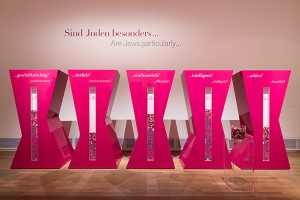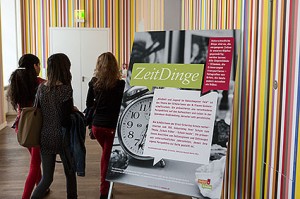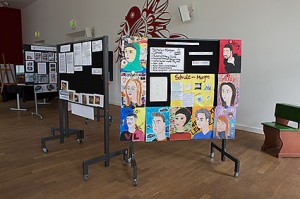Why Lilith Fascinates Our Visitors

View of our permanent exhibition
© Jewish Museum Berlin, photo: Jens Ziehe
One of the tours of the permanent exhibition that I offer regularly is on the subject of women in Judaism. Visitors interested in this topic are usually women’s groups and people already familiar with the essentials of Judaism and Jewish history. I enjoy the lively discussions I have with participants of this tour. When we talk about the life of Glikl of Hameln, Dorothea Schlegel, Albertine Mendelssohn-Bartholdy, and Else Lasker-Schüler, or about Lilith and Eve, we’re also discussing women’s rights – and that means our own rights!
People have heard a wide variety of things about Lilith: “Doesn’t she appear in Goethe’s Faust?” “Lilith is important for fortune telling with cards.” “Adam’s first wife, before Eve.” Some think of Lilith as a threatening ghostly figure, and others named their daughter after her, since she also represents self-determination, independence, unbridled ferocity, and joyous sensuality. Her model of life contrasts with the traditional image of women – in fact, she is Eve’s foil. No wonder that the name Lilith is known above all in feminist circles. → continue reading
There are people who visit the special exhibition “The Whole Truth” not once or twice but a few dozen times: museum guides, those of us who accompany visitors through the exhibition. This time, though, our job isn’t to introduce the exhibits and their deeper meaning but instead to elicit commentary from this very real and tangible general public – and to moderate any discussion that follows. After all, the questions on which the exhibition is based also came from visitors. The museum reflects them in a great number of objects that the curators sought out.

Barometer for the question “Are Jews particularly …?” in the exhibition “The Whole Truth”
© Jewish Museum Berlin, photo: Linus Lintner
The exhibits are very various and consistently surprising; they strike a wide range of cadences as well. Most visitors are astounded and speechless at the chutzpah of some curatorial arrangements. But as soon as a group begins to move through the exhibition and to engage with its guide, the speechlessness transforms into eloquence. → continue reading
Stories from the Student Exhibition “TimeThings”

Students exhibition “TimeThings”
© Jewish Museum Berlin, photo: Ernst Fesseler
Some may ask themselves why, from May 29 to June 1 at the Jewish Museum Berlin, there was a little exhibition of students’ work that had nothing to do with ‘Jewish subjects.’ I would like to answer this question: since last summer, we have been working with three Berlin schools to reinforce positive ways to handle ‘diversity‘ as well as cultural heterogeneity. We advocate creative forms of work that offer the possibility for individual development. That is why we gave the schools an opportunity to conceive with their students of an exhibition that would actually be shown in the museum. As an open-ended, overarching theme we chose ‘Time,’ in order to leave the participants with a lot of latitude.

Students exhibition “TimeThings”
© Jewish Museum Berlin, photo: Ernst Fesseler
As the project leader I was only seldom directly involved in the implementation. I was thus surprised and impressed by the diversity of themes and objects on display. Two pieces struck me in particular and I would like to share their stories: → continue reading



